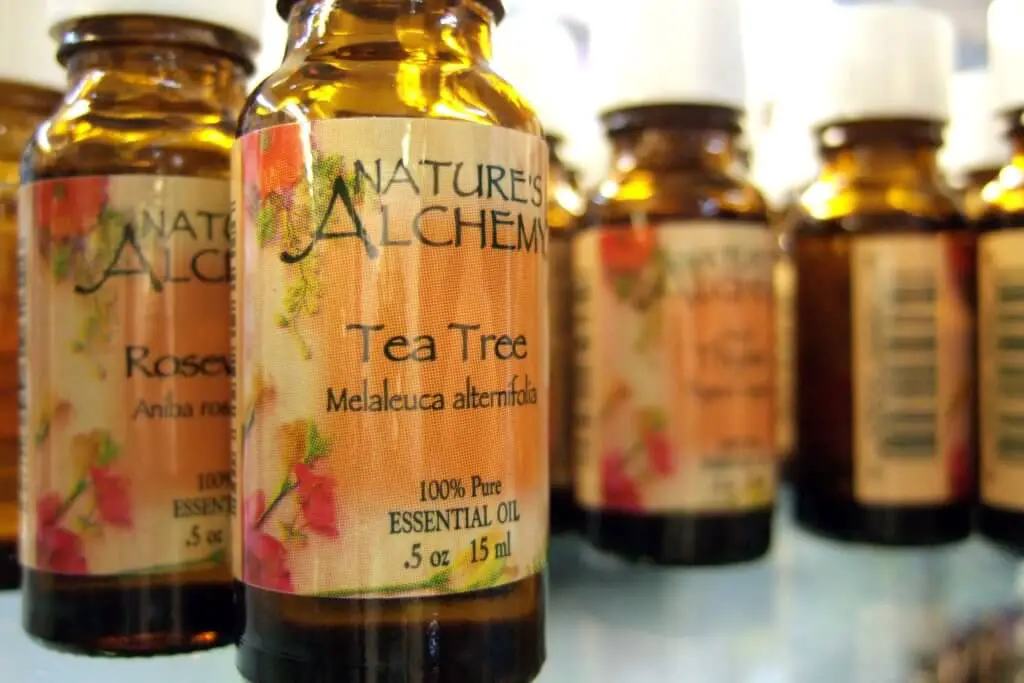Almost everyone has heard of tea tree oil, but fewer people have heard of niaouli oil. Both essential oils come from trees in the Melaleuca genus. Melaleuca trees are known for their papery bark, bottlebrush flowers, and antibacterial properties.
Melaleuca Tree Plant Profile
Melaleuca trees grow between 20 and 115 feet tall. There are approximately 300 types of Melaleuca trees, but the two most popular are Melaleuca quinquenervia and Melaleuca alternifolia. They are part of the Myrtaceae family, which all contain essential oils and similar flowering patterns.
Melaleuca quinquenervia
M. quinquenervia grows between 30 and 60 feet tall and 20 and 30 feet wide. It has grayish-green leaves.
Each bottlebrush bundle has five to ten stamens. This tree blooms between late spring and fall.
What Are You Foraging For Right Now?
We're thrilled to hear your ideas. What would you like to submit today? Feel free to share your thoughts and experiences with us.
A few common names for this tree include:
- Punk tree
- Paper bark tree
- Niaouli
- Broad-leaved paper nark

Melaleuca alternifolia
M. alternifolia is a small tree, sometimes considered a shrub. It only grows to be about 20 feet tall and 13 feet wide.
It has narrow, green leaves with the same creamy, white bottlebrush inflorescence. One major difference is that alternifolia bundles contain 30 to 60 stamens.
A couple of common names for this tree include:
- Narrow-leaved paper bark
- Tea tree

Why Is It Called Melaleuca?
This plant species’ name is of Greek origin. Melas, meaning black, and leukos, meaning white. The tree is often blackened by fire but remains white on the inside.
The papery bark and oils in the foliage are highly flammable and create intense crown fires when ignited. While the surrounding trees suffer, Melaleuca trees survive the flames.
Where Is Melaleuca Native To?
Melaleuca trees are native to Australia, New Caledonia, and Papua New Guinea. They are common in Queensland and New South Wales, especially in Sydney.
Today, you can also find them in the south of France, Hawaii, and South Florida.
It was first introduced to the Everglades in Florida in 1886. Because the trees consume so much water, scientists hoped they would “clean” and drain the swampy malaria waters. However, this experiment didn’t quite work out how they had planned.
In Florida, this noxious weed is harming the ecosystem. While it does help to purify the water, it also displaces other native plants and wildlife. The monospecific forests disrupt natural water flows and are a fire hazard. About 10% of South Florida is covered in M. quinquenervias.
Melaleuca trees grow in hardiness zones 8 to 11. They prefer full sun but can handle some shade.
It is commonly found in wetlands, swamps, creeks, or anywhere where the water is close to the surface.
You will often see these trees planted on the sides of causeways from the mainland to barrier islands as a windbreak.
Are Melaleucas Considered Invasive?
Today, the USDA considers this Australian tree a category one invasive species in Florida.
One tree can produce up to 20 million seeds each year. The wind easily disperses these tiny seed capsules.
Is Melaleuca the Same as Tea Tree Oil?
Any oil from one of the 300 trees in this genus could be called Melaleuca oil.
Tea tree oil exclusively comes from the Melaleuca alternifolia tree. Because this is the most popular oil made from these trees, tea tree oil is often called Melaleuca oil or Melaleuca tea tree oil.
Niaouli oil comes from the Melaleuca Quinquenervia tree. The two oils are similar, but niaouli is gentler with a less intense, almost sweeter scent. Niaouli is a better option for sensitive skin.
Benefits of Tea Tree Oil and Niaouli Oil
Aboriginal people in Australia have extracted the oils from Melaleuca trees for hundreds of years.
Tea tree and niaouli may be helpful as a treatment for:
- Wounds and cuts
- Coughs and colds
- Acne
- Nail fungus
- Inflamed skin
- Athlete’s foot
- Psoriasis
Additionally, the wood from these trees is extremely durable. It’s a great option for carving boats, cabinetry, fences, and building in general.


How to Use Melaleuca Tea Tree Oil
If you don’t have direct access to the leaves, you might want to dilute tea tree oil with water or ointment and apply it to the skin to help with wound healing, inflammation, and psoriasis.
You can also use it as an expectorant. As a cold or cough remedy, you can inhale the scent of the oil through a diffuser, a steam bath, or straight from the bottle.
Using tea tree oil for acne requires a patch test. Facial skin is often sensitive, and some people have a bad reaction to the oil. You must always dilute the oil with coconut oil, water, or another carrier oil.
For nail fungi or athlete’s foot, it is recommended to mix the tea tree oil with a carrier oil and gently apply the mixture to the skin twice a day.
Melaleuca (Tea tree oil) vs Eucalyptus oil
Melaleuca and Eucalyptus oils are not the same, although the two are commonly confused.
Both are from the Myrtle family, which contains over 3,000 species, but they are from different genera. They have similar growth patterns, are both from Australia, and look alike.
Both oils should be diluted or used with a carrier oil when applying them topically. They are both said to treat wounds and inflammation. Additionally, both tea tree and Eucalyptus oil are toxic if ingested.
The two major differences between these oils are that Eucalyptus is more subtle and moisturizing.
Most essential oils can not compare with tea tree oil. It is so strong that it was supposedly used to prevent scurvy in the 1700s.


Can You Eat Melaleuca Leaves?
With approximately 300 types of Melaleuca trees, knowing which ones you can and can’t ingest requires a lot of research.
It is not recommended to eat tea tree leaves or oil, even though they were used as a mouthwash in the past. Tea tree oil is known to be especially toxic if ingested.
It can damage the central nervous system, cause gastrointestinal issues, and even put you in a coma. Additionally, M. alternifolia can cause skin irritation if applied too frequently.
M. quinquenervia, on the other hand, has been known to have great benefits internally and externally. It is usually ingested by infusing the leaves to make tea. Supposedly, niaouli tea combats internal infections in the body, including colon, intestinal, and urethral.
As always, it is necessary to consult a doctor before experimenting with alternative medicine. Not everyone reacts the same to essential oils and natural medicine.
Originally from Florida, but with a lust for travel, Sami has found herself in many remote areas with little-to-no access to traditional medicines. Since 2014, she has been experimenting with natural remedies, eastern medicine, and foraging. She believes that the Earth provides us with everything we need to live, heal, and cure.

